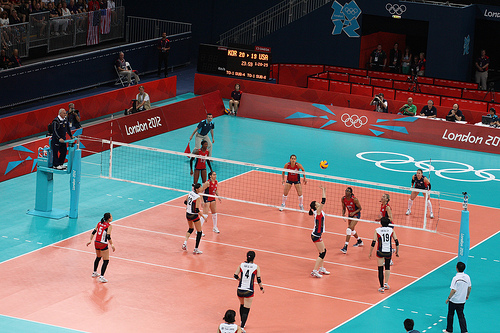Volleyball Court Lines and Markings
Posted by admin on Jan 15th 2022
Volleyball Court Lines and Markings

Volleyball is a lot of fun, whether it's played in a gym, in the backyard, the park or on the beach. But for many, the lines and markings on a volleyball court are confusing. In order to clear up the mystery, consult the following.
Regulation Indoor Courts
Where are the lines for standard indoor volleyball courts?
A regulation indoor volleyball court is 18 meters long by 9 meters wide, with a net traversing the center line. The ball must be hit over a net placed approximately 7.5 feet above the ground for girls and 8 feet above the ground for boys. The poles sticking up from each side of the net signify the court sidelines and are called antennae. Any ball contacting or hit outside the antennae is considered out of bounds. Any player who crosses the center line with any part of his or her body is called for a "fault" penalty.
Three meters from the net on either side of the center line are the attack lines, which separate the frontcourt from the backcourt. Players in the back row may only jump from behind this line--they may land on the other side of the line, as long as they begin their jump from behind the line. This is also referred to as the 3-meter line. The area between net and attack line where front-row players are positioned is referred to as the frontcourt. The backcourt is the area between the attack line and the end line where the players in the back row stand. The service area is the space beyond either end line where a player stands while serving.
Player Positioning
What are the positions in volleyball?
A volleyball team consists of six players, and there are six rotational spots on the court that must be taken during each serve - three in the front row: Left-Front, Center-Front and Right-Front; and three in the back row: Left-Back, Center-Back and Right-Back. The player in the Right-Back spot is the one who will serve to initiate the action.

